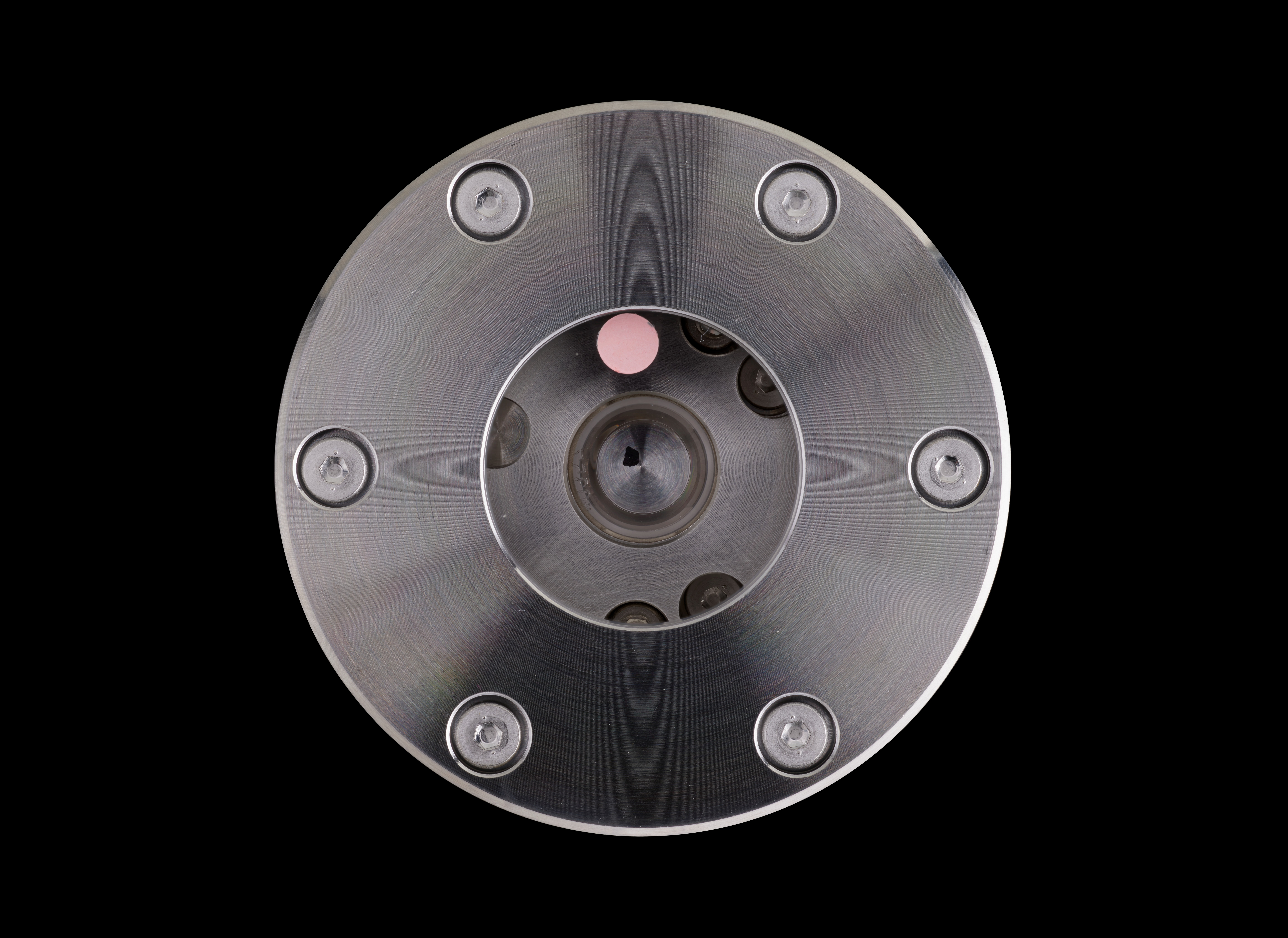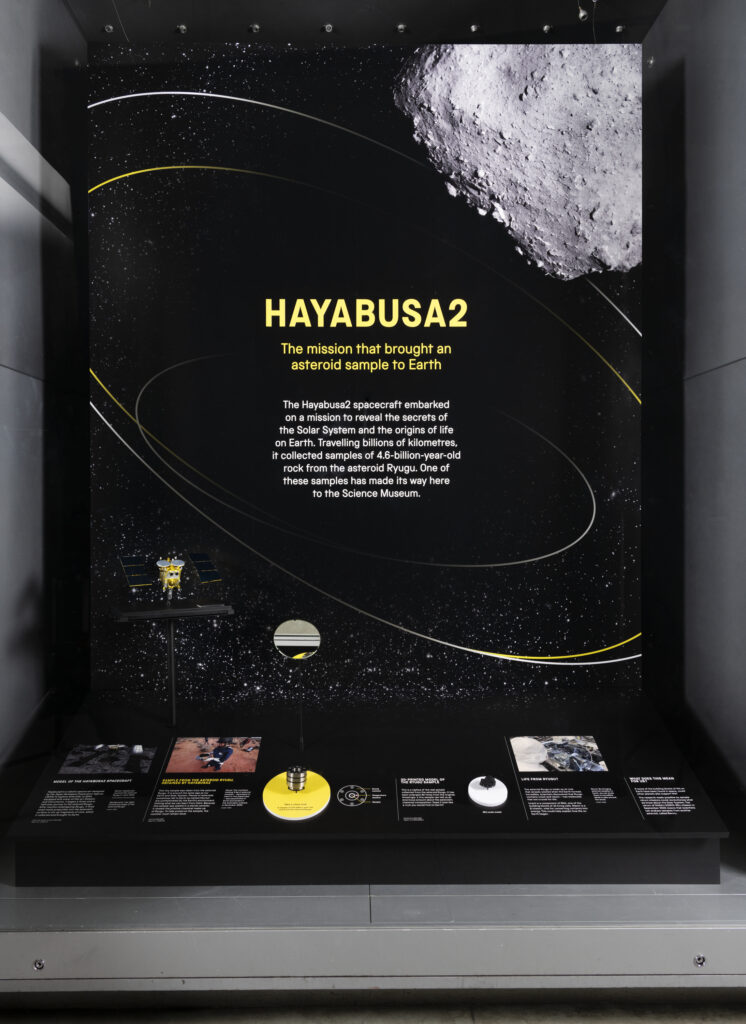
The new display explores the Japan Aerospace Exploration Agency (JAXA)’s Hayabusa2 mission to bring an asteroid sample to Earth. One sample collected by Hayabusa2 has made its way to the Science Museum. The tiny fragment of rock is 4.6 billion years old, and has travelled millions of kilometres across the Solar System from the asteroid Ryugu to Earth. It’s encased in a sterile canister, preserving it exactly as it was found on the asteroid.
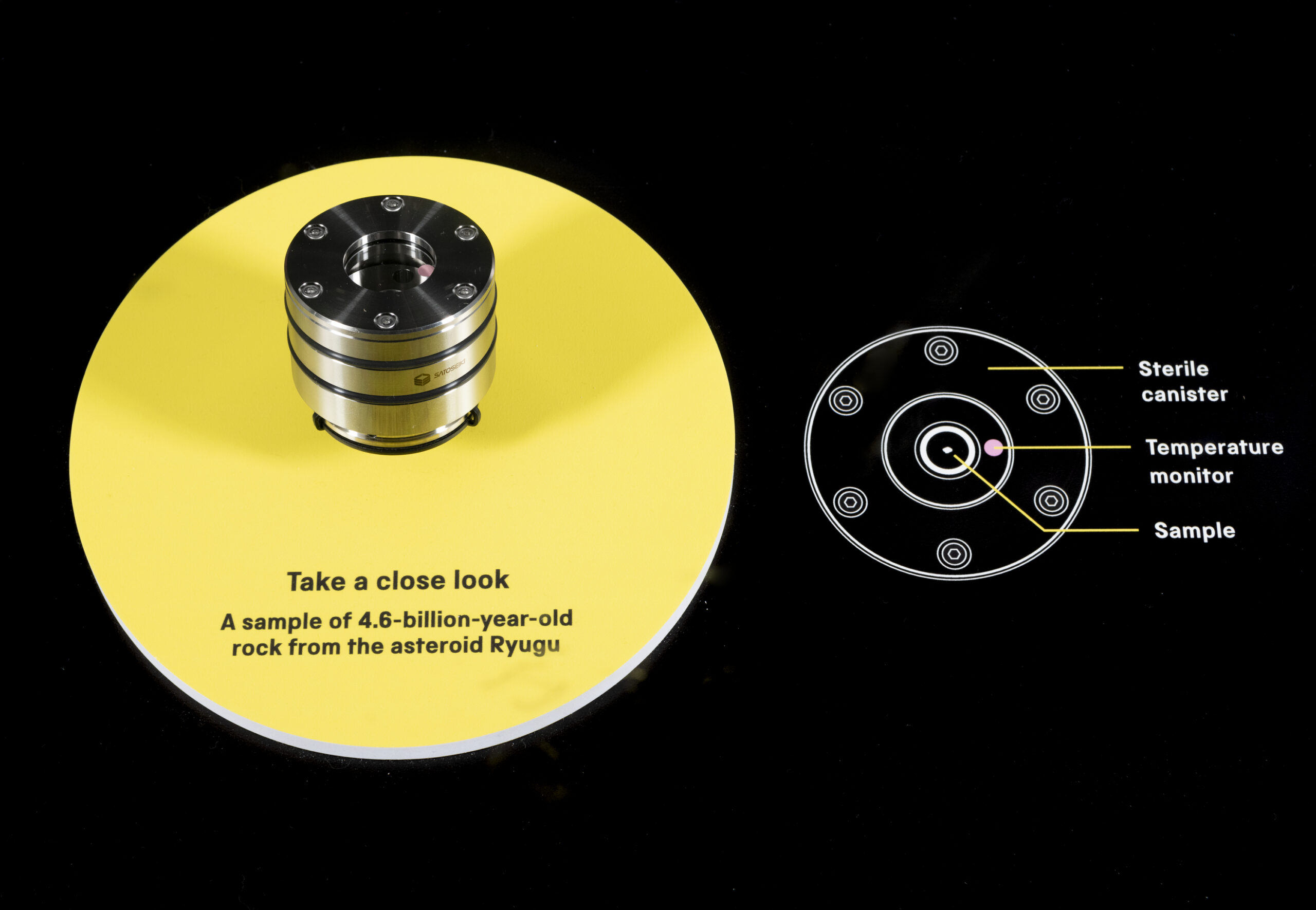
Hayabusa2 launched in 2014, embarking on a four-year journey to the asteroid Ryugu, a carbon-rich rocky body, less than 1km wide, orbiting the Sun at a similar distance to Earth. The asteroid Ryugu is about the same age as the Solar System, and the rock it’s made from is older than our planet. Scientists thought that Ryugu might hold secrets of the early Solar System or even clues to the origins of life on Earth.
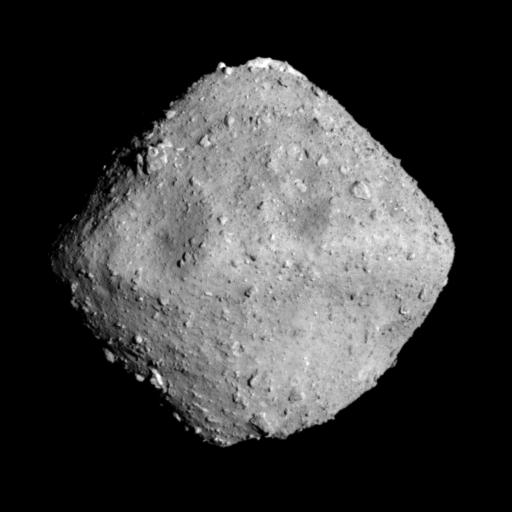
Alongside this ancient space rock sample on display, you can also see a scale model of the Hayabusa2 spacecraft that collected it, as well as images and videos detailing the mission. The display has opened just in time to welcome back to Earth the first NASA mission to collect pieces from an asteroid, with OSIRIS-REx due to return from asteroid Bennu on 24 September 2023.
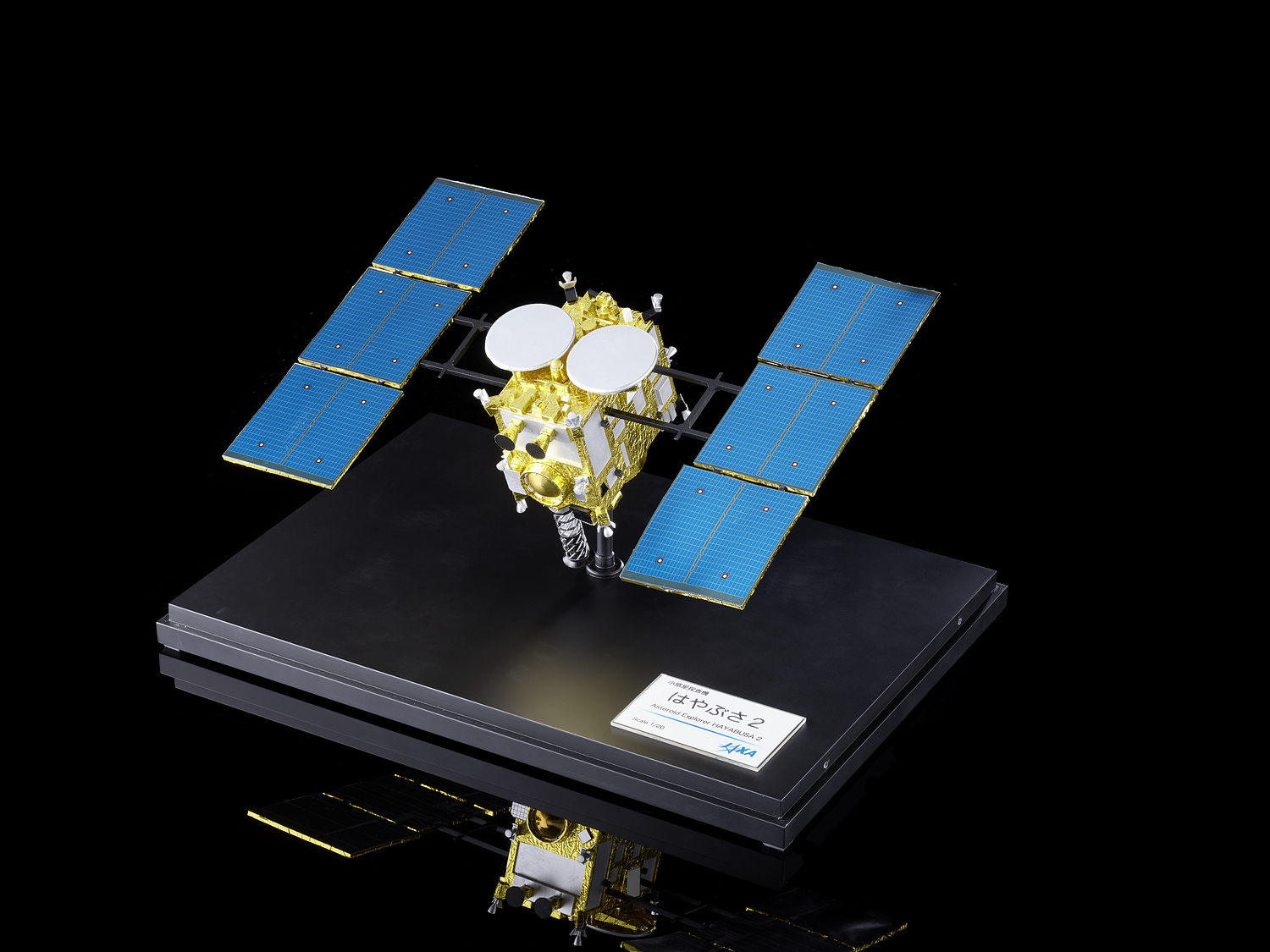
Asteroid sample return missions like Hayabusa2 and OSIRIS-REx are a new way of investigating asteroids. Bits of asteroids do fall to Earth as meteorites, and scientists have been analysing these for many years, but we’re limited in what we can learn from them. By the time they reach the ground, these meteorites have been subjected to the harsh conditions of open space, burnt up as they fell through the atmosphere, and then contaminated by coming into contact with Earth’s environment. It’s hard to say whether they really represent the asteroid they came from.
JAXA’s Hayabusa2 and NASA’s #OSIRISREx missions both returned samples to Earth from different asteroids. The spacecraft were packed with exceptional technology to face the challenges ahead, but their design was quite different. Here are 7 differences between the two missions: pic.twitter.com/Ar9siuJcG5
— JAXA Institute of Space and Astronautical Science (@ISAS_JAXA_EN) September 29, 2023
By collecting the sample directly from the asteroid and sealing it in a canister, it stays in pristine condition for scientific examination. We can then be sure that what we learn from the sample also applies to the asteroid it came from.
The Hayabusa2 spacecraft was equipped with a variety of sensors and instruments to investigate the surface of the asteroid Ryugu. After collecting around 5g of rock (equivalent in mass to five paperclips) Hayabusa2 returned to Earth – having travelled more than 5.4 billion kilometres – and dropped off the sample capsule, which parachuted down to the Australian outback in 2020.
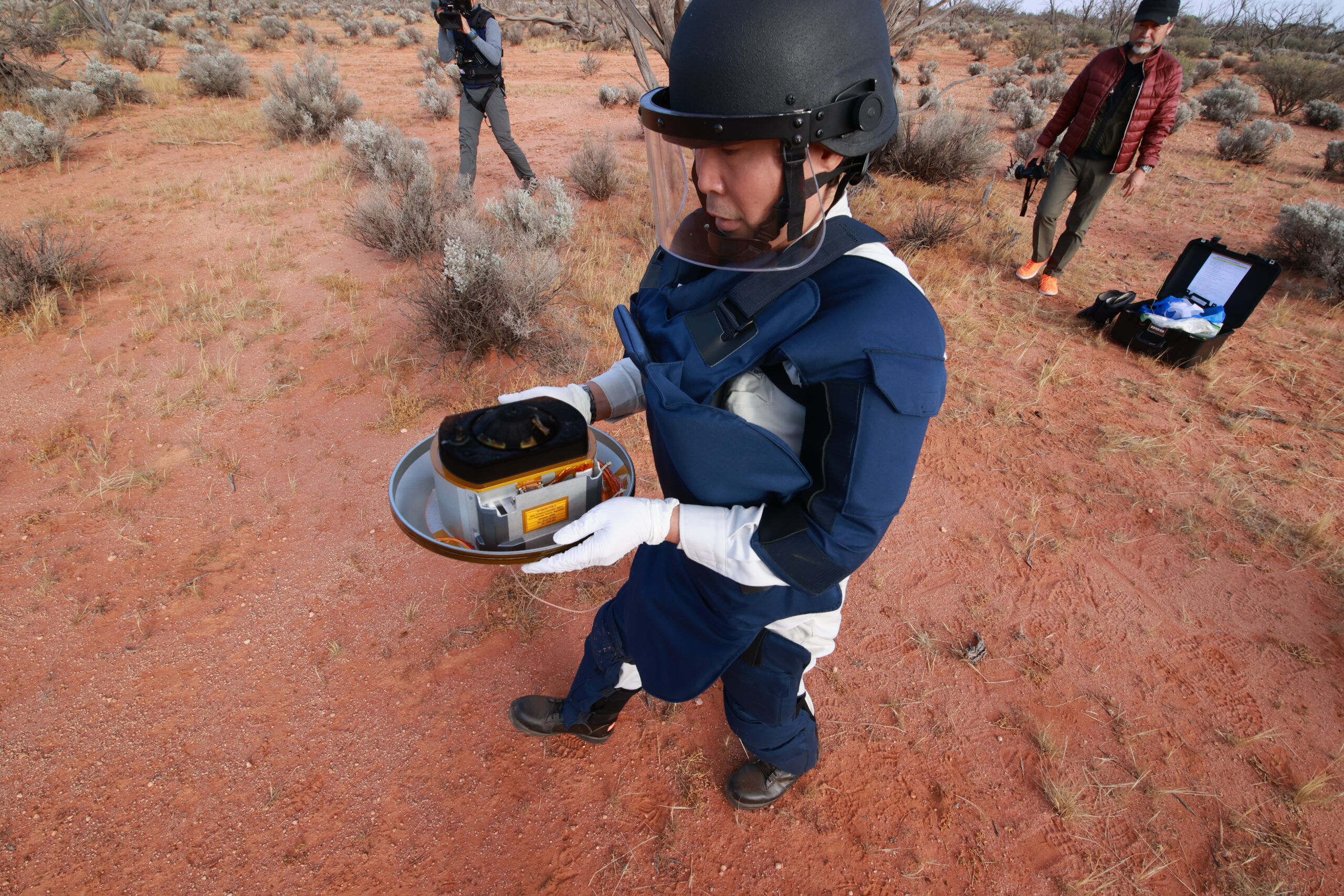
Image credit: JAXA
Samples were sent out to labs around the world for analysis, and the results have already been astounding. The rock was found to contain organic compounds crucial for life on Earth: uracil, a building block of RNA, found in all living cells; and niacin, a nutrient vital for cells producing energy. Traces of fluid water were also found. Could this help answer the question of how life on Earth began?
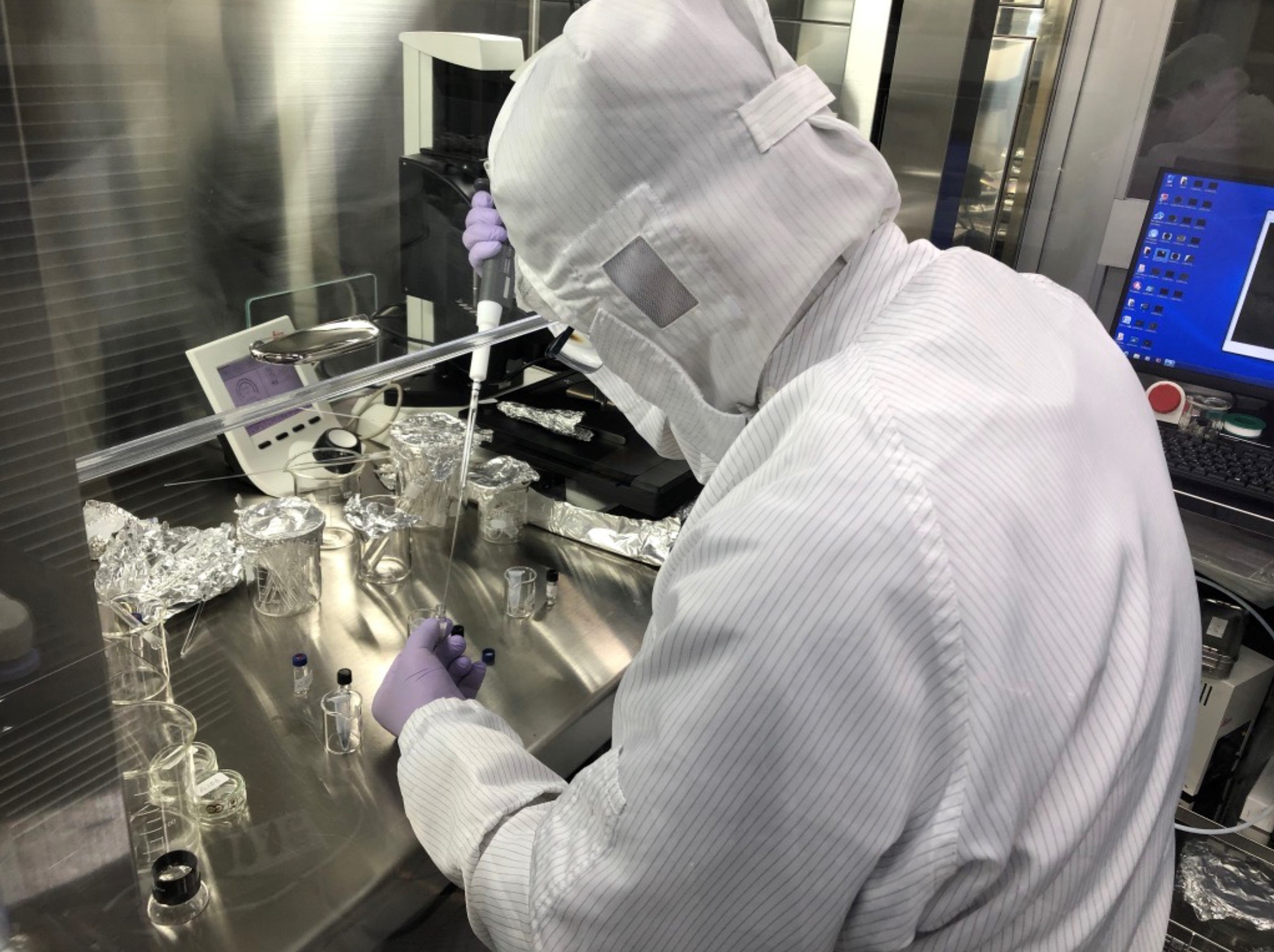
Image credit: JAXA
The Hayabusa2 display can be found by the Exploring Space gallery on the ground floor of the museum.
